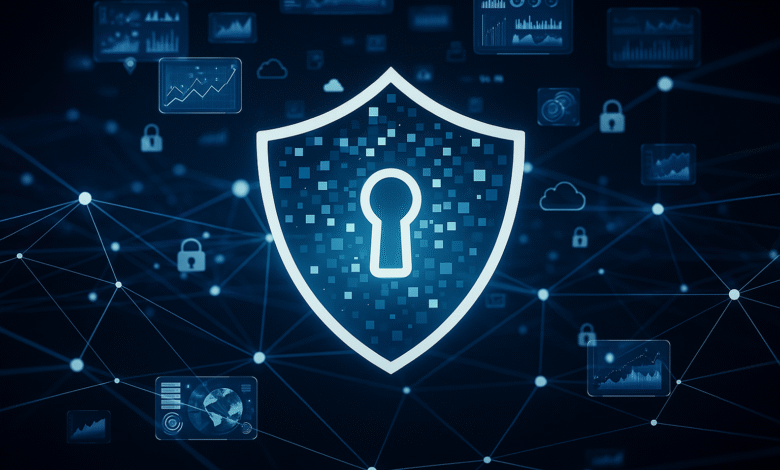Why 24ot1jxa Harmful: The Hidden Cybersecurity Danger You Shouldn’t Ignore

In today’s digitally interconnected world, cybersecurity threats evolve faster than ever. Among the latest and most alarming is a malware strain identified by the unusual code 24ot1jxa. While it might look like a meaningless mix of characters, this label has become a major concern among cybersecurity experts. Understanding why 24ot1jxa harmful is essential for individuals, businesses, and IT professionals aiming to protect their systems and data.
This article provides a comprehensive overview of what makes this malware so dangerous, how it spreads, the damage it can cause, and what you can do to detect and eliminate it.
What Is 24ot1jxa?
24ot1jxa is a highly sophisticated piece of malware known for its stealthy behavior and polymorphic characteristics. It disguises its presence by regularly changing its code, making it extremely hard to detect using traditional signature-based antivirus tools.
The malware is designed to remain unnoticed within systems, silently collecting sensitive data and potentially giving remote access to malicious operators. Its design also allows it to jump across networks, creating widespread havoc, especially in organizational IT environments.
Why 24ot1jxa Harmful: The Real Risks
Let’s break down the primary reasons why 24ot1jxa harmful and why you should take this threat seriously.
1. Data Theft
One of the first things 24ot1jxa does after infecting a system is begin extracting sensitive information. This includes:
-
Login credentials
-
Credit card and banking details
-
Personal identification data
-
Business-related proprietary files
The stolen data is typically sent to remote servers operated by cybercriminals, who may use it for identity theft, blackmail, or even corporate espionage.
2. System Performance Issues
24ot1jxa consumes system resources quietly in the background. Users often report:
-
Slower system speeds
-
Frequent crashes
-
Unresponsive software
Because these issues can also result from normal device aging, users may not realize malware is the cause until it’s too late.
3. Remote Access Capabilities
24ot1jxa includes a Remote Access Trojan (RAT) component. This allows attackers to:
-
Access files
-
Install additional malware
-
Control webcams or microphones
-
Monitor keystrokes
This level of control puts the infected system—and any connected devices—at serious risk.
4. Rapid Network Spread
Once inside one device, 24ot1jxa scans and spreads to other systems on the same network. This makes it especially dangerous for organizations and institutions with shared infrastructure.
5. Evasion of Detection
A major reason why 24ot1jxa harmful is its ability to avoid detection. Traditional antivirus solutions often rely on known malware signatures. Since 24ot1jxa changes its structure frequently, these tools are mostly ineffective. It can also disable logging and hide its tracks from monitoring tools.
How Does 24ot1jxa Spread?
Understanding how 24ot1jxa spreads helps you stay ahead of it. Common infection methods include:
-
Phishing Emails: Attachments or links in emails designed to look legitimate.
-
Fake Software Updates: Malware disguised as system or app update prompts.
-
Drive-by Downloads: Automatic downloads triggered by visiting compromised websites.
-
Bundled Freeware: Included with free or pirated software installations.
-
Removable Media: Spread through infected USB drives or external hard disks.
Who Is Most at Risk?
While anyone can be affected, the following groups are especially vulnerable:
-
Small to Medium Businesses: Often lack robust cybersecurity defenses.
-
Remote Workers: Frequently use personal devices on insecure networks.
-
High-Profile Targets: Politicians, executives, and influencers are frequent targets.
-
Everyday Users: Increasing amounts of personal data stored on devices make even casual users a target.
How to Detect 24ot1jxa
Because why 24ot1jxa harmful is largely due to its invisibility, spotting it is tough. Look out for:
-
Unusual system lag or application crashes
-
Inability to update antivirus or install new software
-
Unexpected pop-ups or unrecognized software installations
-
High internet or CPU usage with no explanation
-
Suspicious account activity or password changes
Advanced detection tools such as behavioral analysis, EDR (Endpoint Detection & Response), and heuristic scanning are better equipped to flag 24ot1jxa than standard antivirus programs.
How to Remove 24ot1jxa
If you suspect 24ot1jxa has infected your system, act fast:
-
Disconnect from the Internet – Immediately cut off external communication.
-
Boot into Safe Mode – Limits the malware’s active capabilities.
-
Run a Malware Removal Tool – Use tools like Malwarebytes, Norton Power Eraser, or HitmanPro.
-
Perform Full System Scan – Deep-scan using updated antivirus software.
-
Change All Passwords – Do this from a clean device to avoid re-compromise.
-
Reinstall OS if Needed – A complete wipe may be the only solution in extreme infections.
Preventive Measures
To prevent infection and reduce why 24ot1jxa harmful in your environment:
-
Update software regularly to fix known security flaws.
-
Use a trusted antivirus and keep it up to date.
-
Implement multi-factor authentication across all accounts.
-
Train employees or family members on how to spot phishing and fake updates.
-
Use firewalls to block suspicious connections.
-
Back up your data regularly to secure locations.
FAQs: Why 24ot1jxa Harmful
Q1: Is 24ot1jxa a virus or malware?
A: 24ot1jxa is a form of polymorphic malware, often containing virus-like components such as keyloggers, RATs, and data miners.
Q2: Why 24ot1jxa harmful more than other malware?
A: Because of its stealth, data theft capabilities, and network propagation—combined with its ability to mutate and avoid detection.
Q3: Can antivirus software stop 24ot1jxa?
A: Most traditional antivirus tools struggle to detect it due to its changing code. Use advanced EDR tools or behavior-based systems instead.
Q4: Can it affect mobile devices too?
A: While most cases are on desktops and laptops, if mobile systems are unprotected or rooted, they could be vulnerable too.
Q5: How long can 24ot1jxa stay hidden?
A: It can remain active for weeks or even months before detection, depending on the system’s defenses.
Conclusion
There’s no doubt why 24ot1jxa harmful has become a major concern across the cybersecurity landscape. With its ability to infiltrate undetected, steal sensitive data, and control systems remotely, this malware poses a serious threat to both individuals and businesses. Vigilance, education, and proactive security are the best ways to protect yourself from this silent menace.
Read also:Software Huzoxhu4.f6q5-3d: Explore Its Full Power and Potential



